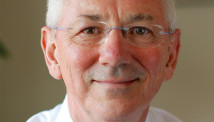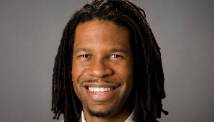Defense Secretary Leon Panetta will lift a longstanding ban on women serving in combat, according to senior defense officials.
The services have until this May to come up with a plan to implement the change, according to a Defense Department official.
That means the changes could come into effect as early as May, though the services will have until January 2016 to complete the implementation of the changes.
"We certainly want to see this executed responsibly but in a reasonable time frame, so I would hope that this doesn't get dragged out," said former Marine Capt. Zoe Bedell, who joined a recent lawsuit aimed at getting women on the battlefield.
The military services also will have until January 2016 to seek waivers for certain jobs -- but those waivers will require a personal approval from the secretary of defense and will have to be based on rationales other than the direct combat exclusion rule.
The move to allow women in combat, first reported by the Associated Press, was not expected this week, although there has been a concerted effort by the Obama administration to further open up the armed forces to women.
The Joint Chiefs of Staff unanimously recommended in January to Secretary Panetta that the direct combat exclusion rule should be lifted.
"I can confirm media reports that the secretary and the chairman are expected to announce the lifting of the direct combat exclusion rule for women in the military," said a senior Defense Department official. "This policy change will initiate a process whereby the services will develop plans to implement this decision, which was made by the secretary of defense upon the recommendation of the Joint Chiefs of Staff."
Chairman of the Joint Chiefs Gen. Martin Dempsey sent Panetta a memo earlier this month entitled, "Women in Service Implementation Plan."
Adek Berry/AFP/Getty Images
Soaring With the First Woman Fighter Jet Commander Watch Video
Instant Index: Divers Save Dolphin; Orangutans Play With iPads Watch Video
Extreme Cold Takes Its Toll on Freezing Nation Watch Video
"The time has come to rescind the direct combat exclusion rule for women and to eliminate all unnecessary gender-based barriers to service," the memo read.
"To implement these initiatives successfully and without sacrificing our warfighting capability or the trust of the American people, we will need time to get it right," he said in the memo, referring to the 2016 horizon.
Women have been officially prohibited from serving in combat since a 1994 rule that barred them from serving in ground combat units. That does not mean they have been immune from danger or from combat.
As Martha Raddatz reported in 2009, women have served in support positions on and off the frontlines in Iraq and Afghanistan, where war is waged on street corners and in markets, putting them at equal risk. Hundreds of thousands of women deployed with the military to those two war zones over the past decade. Hundreds have died.
READ MORE: Female Warriors Engage in Combat in Iraq, Afghanistan
"The reality of the battlefield has changed really since the Vietnam era to where it is today," said Rep. Tammy Duckworth, D-Ill., a former military helicopter pilot who lost both her legs in combat. "Those distinctions on what is combat and what is not really are falling aside. So I think that after having seen women, men, folks who -- cooks, clerks, truck drivers -- serve in combat conditions, the reality is women are already in combat."
Woman have been able to fly combat sorties since 1993. In 2010, the Navy allowed them on submarines. But lifting restrictions on service in frontline ground combat units will break a key barrier in the military.
READ MORE: Smooth Sailing for First Women to Serve on Navy Submarines
READ MORE: Female Fighter Pilot Breaks Gender Barriers
Panetta's decision will set a January 2016 deadline for the military service branches to argue that there are military roles that should remain closed to women.
In February 2012 the Defense Department opened up 14,500 positions to women that had previously been limited to men and lifted a rule that prohibited women from living with combat units.
Panetta also directed the services to examine ways to open more combat roles to women.
However, the ban on direct combat positions has remained in place.

 iPhone, iPad and Mac are trademarks of Apple Inc., registered in the U.S. and other countries. App Store is a service mark of Apple Inc.
iPhone, iPad and Mac are trademarks of Apple Inc., registered in the U.S. and other countries. App Store is a service mark of Apple Inc.
















